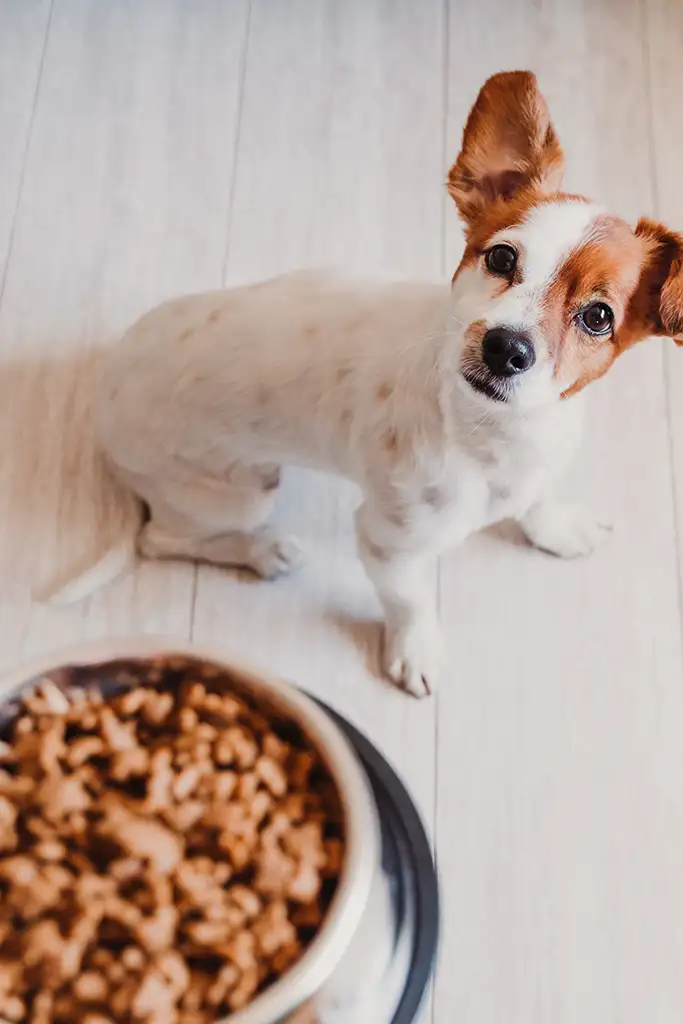Irish Wolfhound vs Great Dane – Comparing These Giant Breed Dogs
Quick Guide
The Irish Wolfhound vs Great Dane – A Breed Comparison
Have you ever wanted a dog as big as a pony?
When it comes to size, the Irish Wolfhound and the Great Dane lead the race. These huge dogs are famous for their size and good character! They enjoy spending time indoors with their families, as well as running around and burning energy outside. If you don’t know which of these is better suited for you, keep reading!
This breed needs daily exercise, and they’ll do better with at least 40 minutes of daily moderate-intensity walking. They also enjoy going out on their own, so a large fenced yard is your best option.
Irish Wolfhound vs Great Dane : Similarities
- Some of the Largest Dog Breeds in Existence: Both of these dogs stand over 30 inches tall and weigh more than 110 pounds. In fact, most of them will weigh around 120 pounds as adults! The Wolfhound and the Great Dane are one of the biggest dog breeds in the world and need plenty of space to run around.
- Very Energetic When Young, Mellow When Older: Partly due to their size, and partly due to their hunting past, both the Great Dane and the Wolfhound are very energetic as puppies, meaning you’ll have to offer them at least 1 hour of exercise and play time per day, if not more. As they grow older, they’ll usually mellow out, but they’ll still need daily walks to be happy.
- Gentle Giants: Their huge size doesn’t correlate to their personality. Both of these breeds are super sweet, especially with children. They can be slightly too rough for small kids, but once trained they’ll love to play and tumble around with your kids.
Great Dane vs Irish Wolfhound : Differences
- Soft vs Wiry Coat: This is one of the main differences between the breeds. While Great Danes have short, thick and soft coats, Wolfhounds have very rough, wiry hair. These differences make grooming essential, particularly with Wolfhounds. They need consistent trimming every month or so.
- Mastiffs vs Hounds: While Great Danes descend from mastiff-like dogs and were bred to hunt and kill their prey, whereas Wolfhounds were used to chase –but not kill- bigger game. This is evident in the shape of their head: Great Danes have strong jaws that could crush some bones just like other Mastiffs, while Wolfhounds have slightly more delicate features.
- Use a to special de-matting brush remove any mats in your dog’s fur
Irish Wolfhound : Breed Profile
History Of The Breed
This giant and muscular dog originated in Ireland, where they served as a hunting and fighting dog. In the 19th century, they almost became extinct when Europe’s bigger prey animals largely disappeared from the country.
Nevertheless, in 1840, R.D. Richardson and Captain G.A. Graham set to restore the breed. Nowadays, this mildly popular breed is recognized for its large size and gentle nature.
Irish Wolfhounds were used to hunt wild boar, stags and bears – Irish Wolfhound Club of America.
What Do Irish Wolfhounds Look Like?
These are big dogs! Males are at least 32 inches tall and 120 pounds. Females are slightly smaller, with at least 30 inches and around 105 pounds. They come in grey, white, brindle, fawn and black coats, mostly spotted.
Besides their size, Wolfhounds stand out because of their coat. They have hairy, rough and hard hair, especially under their jaw and on their eyebrows. Their hair helped them get through the woods while hunting, and now it’s mostly for show. Because of that, some breeders have started crossing Wolfhounds with softer or longer coats, to make them easier to pet.
PRO TIP: Take care of your Irish Wolfhound’s coat! This breed needs consistent grooming and they shed all year round. Besides daily brushing to get rid of extra hair, you’ll have to trim the areas between their paw pads, underbelly and backside every 1-2 months or so.
Behavior & Temperament Of The Irish Wolfhound
Even though they were initially bred to hunt, the Irish Wolfhound is very gentle and usually doesn’t do a good job as a guard dog. This breed loves being around humans and can be very sensitive. As a result, positive reinforcement training is recommended (we always advocate positive reinforcement but especially so for the more sensitive breeds).
They have a mild prey instinct that can be controlled through consistent training, so if you’re an experienced dog owner it should be fine to have an Irish Wolfhound alongside smaller pets like cats or ferrets.
Irish Wolfhounds have a mild prey instinct due to their hunting past. Make sure to train them properly!
Health
As with other giant breeds, owners need to be mindful of their joints even as young puppies. For example, going up and down the stairs can potentially cause joint issues.
The Irish Wolfhound is also relatively short-lived, generally reaching 6 to 8 years old. Before adopting a pup, make sure it’s been tested for hip and elbow dysplasia, as well as for liver shunt.
PRO TIP: If you don’t know which tests you should be asking for, look for an OFA-certified clinic near you or visit ofa.org. This is the Orthopedic Foundation for Animals, and they’ll be able to give you in-depth information.
Great Dane : Breed Profile
History Of The Breed
This big friendly giant is a well-known breed that’s frequently misunderstood. In spite of their name, this breed isn’t originally from Denmark. In fact, it comes from Germany! This gentle dog was born as a mix of British mastiffs and wolfhounds. In the 15th and 16th century German aristocracy took the breed to create a better hunting dog that could handle large wild boars. Eventually, other smaller hunting dogs replaced the Great Dane. Nevertheless, the breed remained a favorite of aristocrats. German’s love for this dog was such that in 1876 they named them the national dog!
As of 2024, the Great Dane is one of the most popular breeds around the world and the American Kennel Club rates it as 19 out of 135.
What Do Great Danes Look Like?
These are big, heavy dogs. Males can reach around 32 inches tall and weigh between 100 and 120 pounds, with females being a little smaller. They have a short, shiny coat and a square, muscular body.
This breed comes in different colors and, even though their coat is short and thick, they need weekly brushing to keep their skin healthy.
PRO TIP: As other giant breeds, Great Danes want to eat a lot. But when they’re young, a spur growth that occurs too quickly can cause other problems, like arthritis. To avoid this, carefully monitor your Great Dane’s portions as a puppy and adjust weekly as needed. Ask your vet for specific advice suited to your own pup.
Behavior & Training Needs
In spite of their somewhat menacing looks, Great Danes are sweeties. Nevertheless, because of their hunting past, this breed is a great guard dog and can get defensive. This is especially true when they feel their family is being threatened.
These protective tendencies, paired with their size, make training this breed a necessity. As other dogs, Great Danes respond better to positive reinforcement. They do have a mild prey instinct but it shouldn’t affect other animals in the home as long as they’re raised together.
Great Danes also need consistent exercise. This breed is better suited for indoor life but they do need a healthy outlet to use up their energy. While you’re on these walks, it’s important to keep them leashed: it will help you keep them safe and will prevent them from running off after other animals.
PRO TIP: Make sure to train your Great Dane not to bark incessantly! Although they usually aren’t big barkers, if they do get into the habit they’ll have an incredibly loud and deep bark that will get tiring quickly.
Are Great Danes Good With Children?
This breed loves to play and make great family dogs, given they’re properly trained. They need to understand their size and families should encourage them being gentle with younger kids. This is especially important when it comes to jumping on people: this can be dangerous for both you and your dog!
Encourage your Great Dane to be gentle with kids: their wagging tail can knock a toddler over! They do better with positive reinforcement
Great Dane Health
This giant breed has a relatively short lifespan: between 6 and 8 years for most of them. They usually suffer from bloat, a life-threatening condition where their stomach twists while filled with air. The only cure for bloat is emergency surgery, and many Great Danes die from it.
“Between 40,000 and 60,000 dogs die every year in the US due to bloat” – Glickmann et al. “Non-dietary risk factors for gastric dilatation-volvulus in large and giant breed dogs”
Irish Wolfhound & Great Dane as Family Dogs
In this matter, the Wolfhound vs Great Dane conundrum also boils down to how similar these two breeds are.
Both of these dogs are great for families, if you have the time and space to dedicate to them. Due to their size, it’s important you commit to consistent, positive training. This is especially true if you want them to share their home with small children! They can unknowingly tumble toddlers and younger kids, so proper training is essential.
These breeds also need daily exercise, so an active family will be a great fit.
If you want to adopt one of these cuties, make sure you understand the financial implications: giant breeds not only eat way more than other dogs, they usually need different medical care and are at risk of life-threatening health conditions that could be very expensive to treat.
The Irish Dane – The Irish Wolfhound Great Dane Mix
The Great Dane Irish Wolfhound mix, sometime referred to as the Irish Wolfhound Great Dane or the Wolfhound Dane, is a giant crossbreed that’s still rare to find. Just as its parents, this lovable pup is a gentle giant. Their coats are usually spotted and on the dark grey side, although you could find them in lighter color combinations.
Just as their parents, the Irish Wolfhound Great Dane mix has a higher risk of orthopedic conditions, bloat and liver shunt. The Irish Wolfhound Great Dane mix isn’t usually purposefully bred but rather happens by chance. If you’re interested in adopting this sweet giant, ask a responsible breeder: they might be able to point you to an unexpected litter.
FAQ
Are Irish Wolfhounds bigger than Great Danes? Irish Wolfhound vs Great Dane size
Short answer: Slightly, but not by much.
When you put an Irish Wolfhound next to a Great Dane, it’s difficult to know which one will be larger. When it comes to the Irish Wolfhound and Great Dane comparison, many factors come into play. In general, they’re both giant breeds that stand over 30 inches tall and more than 110 pounds.
Wolfhounds are usually above 32 inches tall, while some Great Danes will be just around 30 inches, but it’s not uncommon for both of them to be around the same size.
Do Irish Wolfhounds and Great Danes get along with other small pets or dogs?
Usually yes, as long as you train them properly and they have enough daily exercise. These dogs were made to hunt, so they have a medium to high prey drive. Nevertheless, if they don’t have excess energy to burn, they’ll be happy to share homes with cats, ferrets and other small pets.
References
- American Kennel Club. Great Dane. Consulted on April 29th on [https://www.akc.org/dog-breeds/great-dane/ ]
- American Kennel Club. Irish Wolfhound. Consulted on April 29th on [https://www.akc.org/dog-breeds/irish-wolfhound/ ]
- Glickman, L. T., Glickman, N. W., Schellenberg, D. B., Raghavan, M., & Lee, T. (2000). Non-dietary risk factors for gastric dilatation-volvulus in large and giant breed dogs. Journal of the American Veterinary Medical Association, 217(10), 1492-1499.
- Irish Wolf Club of America (2016). Early History. Consulted on April 29th on [https://www.iwclubofamerica.org/early-history-starbuck]
- United Kennel Club. Great Dane: Breed standard. Consulted on April 29th on [https://www.ukcdogs.com/docs/breeds/great-dane.pdf]











